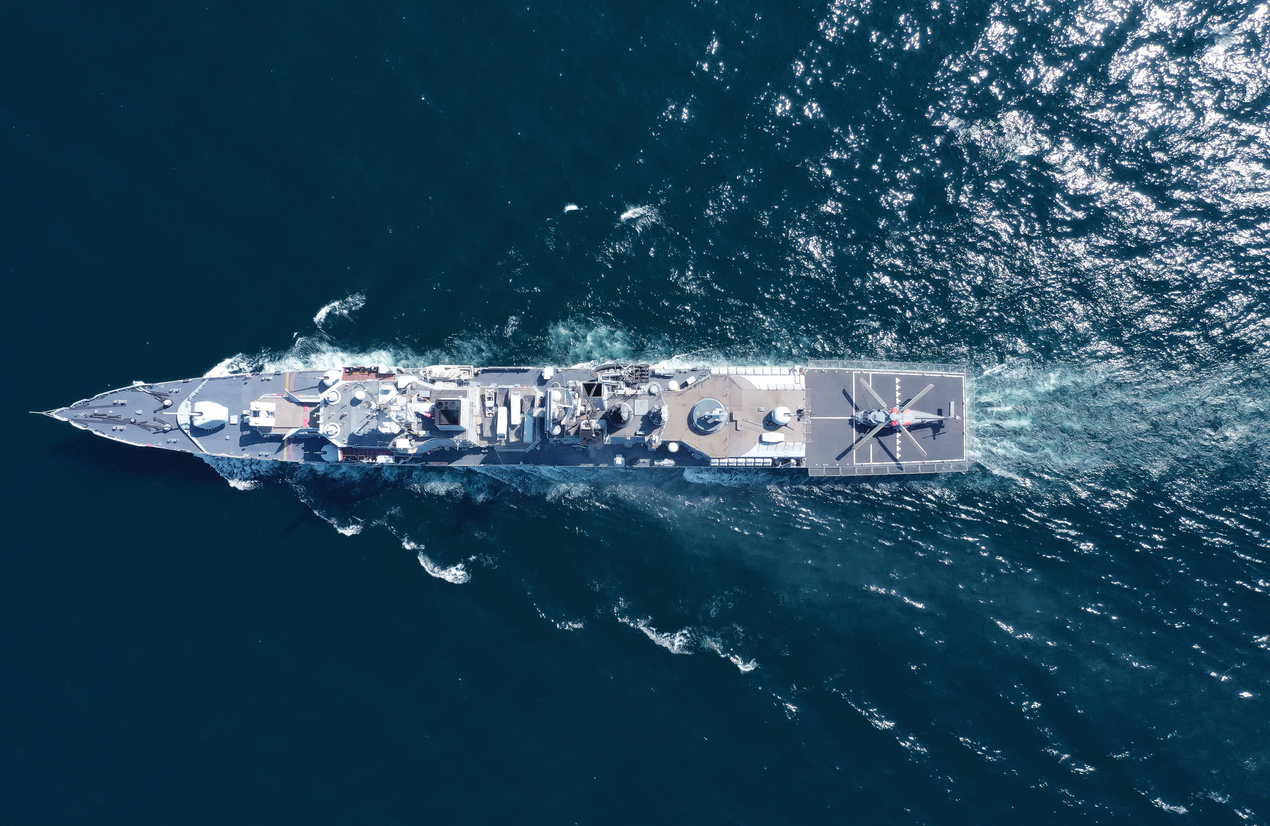Putting the Naval Ship Ecosystem on Investors’ Radar
While deals have been scarce, robust government funding and a prolific supply chain make the naval ship ecosystem ripe for M&A

When the U.S. Department of Defense released its fiscal year 2024 budget in March, Secretary of Defense Lloyd J. Austin III called it “the most strategy-driven request we’ve ever produced.”
That budget includes $48.1 billion for investments in sea power, including the construction of nine new fleet ships, as well as $52.8 billion allocated toward naval readiness. In total, the Department of the Navy requested $255.8 billion for FY24, an $11 billion year-over-year increase.
As global military conflicts intensify, analysts say the DOD’s FY 2024 naval budget reflects an aggressive push to broaden the nation’s naval fleet by not only increasing the number of ships in operation but through investments in modernization of existing craft.
Experts note that this level of government spending has created several niches within naval ship maintenance, repair and operations (MRO) and modernization with strong M&A potential—yet they remain largely overlooked by middle-market dealmakers. “There is virtually no M&A that happens in that area,” says Michael Richter, managing director and global head of Lazard’s Aerospace & Defense investment banking group. “And yet, it seems like it could be, and should be, an excellent opportunity from an M&A perspective.”
Emerging Niches
With government funding for building new ships and upgrading existing ones, there are plenty of Tier 1, 2 and 3 suppliers within the naval ship supply chain poised for growth.
Trevor Bohn, a partner at A&D-focused investment bank KAL Capital Markets, points to software development as a prominent component of ship modernization efforts, particularly when it comes to cybersecurity and, increasingly, artificial intelligence. Software upgrades are reaching entire naval fleets as well as ground bases and ports out of which those fleets operate, making this “a premium part of the market right now,” he says.
Listen: Michael Richter Talks Aerospace and Defense M&A
Within the shipyard, Bohn highlights a wide array of niches that are expanding because of federal funding, including the construction of new vessels and MRO of existing ones, presenting an alluring opportunity for acquirers. Last February, Lazard advised PE firm Lone Star Funds on its acquisition of ship repair services platform Titan Acquisition Holdings from Carlyle and Stellex Capital Management. And in June, Washington, D.C.-based Arlington Capital Partners acquired Pegasus Steel, which provides fabricated steel structures used to construct submarines and other naval systems.
But Bohn says investment opportunities within the naval ship supply chain extend beyond ship building and repairs.
Ship modernization efforts include hardware installations and development of onboard technologies like defense and radar systems. These technologies need bespoke wiring and interconnectivity with other components, custom enclosures and shelving, and service providers that can retrofit all these products for installation on board. “There are major structural changes that need to be made to the ship to be able to physically get some of the equipment in there,” says Bohn, adding that naval ship upgrades are “no longer just about someone developing software. It’s no longer just an OEM making a new box that goes into an existing rack on the boat. It’s major system upgrades.”
Related content: Dealmaker Q&A: HC Private Investments on Prince Industries’ Acquisition of Vulcan Machine
For potential acquirers, this environment is attractive both for its growth trajectory and because of government grants that cover significant capital expenditures for the manufacturers and suppliers fueling fleet modernization. “That’s a massive benefit for any kind of private equity investor,” notes Bohn.
I don’t believe that people understand what the opportunity is within the Navy market as they do within, say, traditional aerospace.
Trevor Bohn
KAL Capital Markets
Overlooking the Opportunity
Despite the tailwinds fueling growth within the naval ship ecosystem, Bohn and Richter acknowledge that this space is often overlooked by dealmakers, even those active in the broader aerospace and defense sector.
“I don’t believe that people understand what the opportunity is within the Navy market as they do within, say, traditional aerospace,” says Bohn.
Richter agrees: “I don’t think too many people out there are thinking about this, but I think there could be—and should be—more investment.”
As with other pockets of aerospace and defense, certain headwinds continue to weigh on the market, especially talent shortages. While Richter notes that labor challenges within the naval ship MRO and modernization space may not be any more pronounced than other areas of A&D, he acknowledges that shipyards in particular may face difficulties hiring and retaining talent due to the labor-intensive nature of the work.
Bohn adds that geographically, these shipyards often exist in isolated coastal areas with limited qualified workforce supply and strong union ties. Outsourcing labor beyond the shipyard can alleviate this workforce strain, he notes. Key naval contractors like General Dynamics Electric Boat and Newport News Shipbuilding are already outsourcing millions of hours’ worth of work every year. The Navy’s attack submarines program executive officer Rear Adm. Jon Rucker told reporters last year that these two contractors are expected to outsource 5 million manhours by 2025 to keep pace with submarine construction demand.
Labor constraints are an important consideration for potential acquirers, yet experts still expect M&A activity within the niche to pick up. “I think you’re going to see more investment activity, you’re going to see continued support by the industry to ensure the supply chain has the tools it needs to produce their parts, and you’re going to see tremendous growth from a labor standpoint in the Tier 2 and Tier 3 part of the supply chain,” says Bohn. “All of those things tell me that there will be more M&A activity, and valuations are probably going to go up.”
Carolyn Vallejo is Middle Market Growth’s digital editor.
Middle Market Growth is produced by the Association for Corporate Growth. To learn more about the organization and how to become a member, visit www.acg.org.


